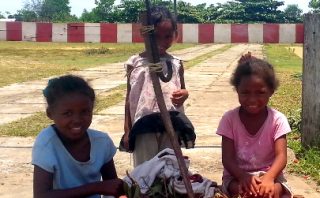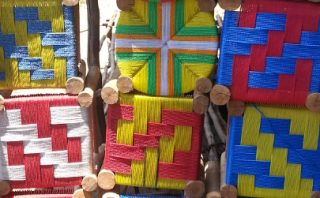Finally, ten o’clock at night, and we arrive at Résidence Madalief, our lodging while in Antsirabe. So much for my grand notion of avoiding all day drives on this trip. West from Andasibe on RN 2 to Antananarivo takes a good four hours. Then south from Antananarivo on RN 7 to Antisirabe another three in daylight or, like us, four at night. I seriously question whether there is a straight highway anywhere in Madagascar. I’m told there is, but I haven’t seen it yet.
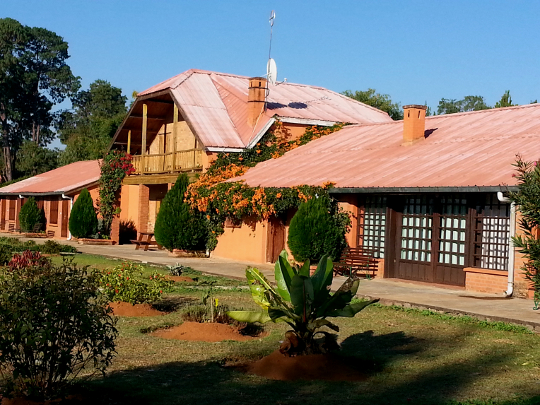
Once we’re in Antsirabe, it doesn’t help that we don’t really know where we’re going. Misa, our driver, stops several times to ask for directions and again for further directions. We finally find the guesthouse. The staff is waiting up for us. Thank you. They show us to our room. End of a long day.
Résidence Madalief
In the morning, we explore the grounds at Résidence Madalief. Some rooms are in the main building. Ours is in a nearby, four-room cottage. The buildings are constructed with local materials and techniques – rough hewn timber framing and bricks. The water is solar heated.
We meet Pluto, the dog, walk through the gardens, and discover a hutch with rabbits and guinea pigs. Next to the hutch is a short stone wall penning in a few radiata tortoises, including a baby that was hatched there. We finally make it to the dining room for a continental breakfast (not complimentary, but reasonably priced): Malagasy coffee and tea, home baked bread, jam, and fruit.


Résidence Madalief opened its doors in 2010. The guesthouse is a project of a Dutch foundation that initially worked with orphans and single mothers in the nearby town of Ambositra. All the employees — manager, staff, gardeners, and guards — are all locals hired and trained by the foundation. All the profits from the guesthouse fund the work of the foundation. Recently, they built a new roof for a local school so the children can attend even when it’s raining.
We stay for two nights and enjoy our time here. Résidence Madalief is a little over 4 miles (7 kilometers) south of Antsirabe on a country road. There’s a small sign marking the entrance (watch for it closely if you’re headed that way). The setting is pastoral and relaxing. If you travel to Antsirabe, I highly recommend staying here.
Antsirabe
Antsirabe means “where there is salt” referring to the mineral hot springs located here. The town sits at 4900 feet above sea level (1500 meters). I find the nights here in late April to be quite cool. Maybe even chilly. Antsirabe was founded by Norwegian missionairies in 1872. The city is Madagascar’s third largest and is as an industrial and agricultural center.
After breakfast, we drive in to town. We don’t get far when we stop for photographs. People are bringing in the rice harvest.
We make our way to the Three Horse Beer brewery. Everyone calls the beer T-H-B pronounced the French way. For us English speakers, tay-awsh-bay. THB is a refreshing, light pilsner on hot Malagasy days, which are almost every day. But I’m not saying I drink it every day. THB is brewed in Antsirabe by Brasseries STAR Madagascar S.A. who also bottles soft drinks and water.
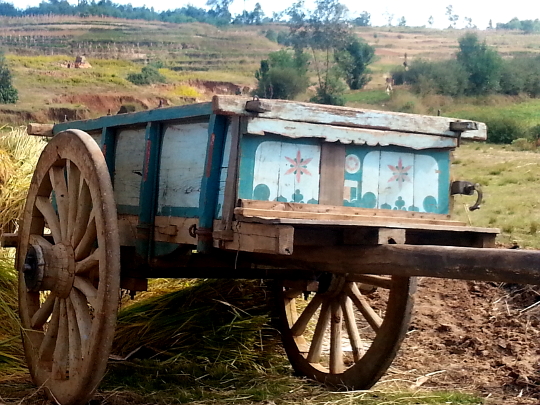
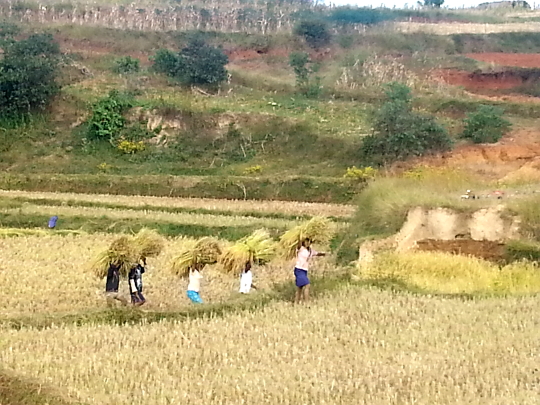
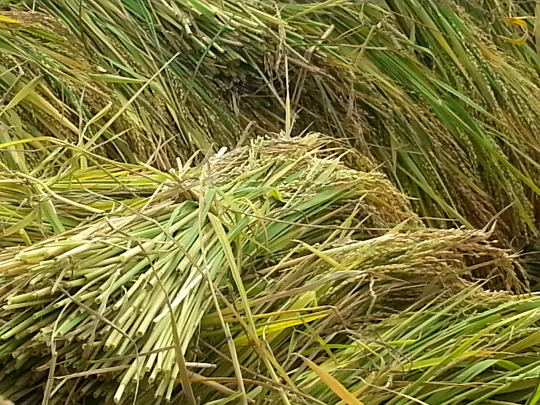
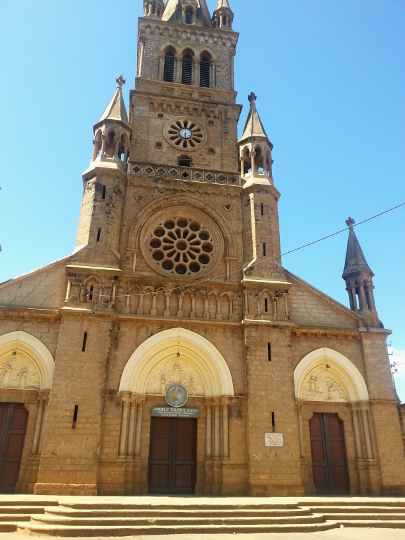
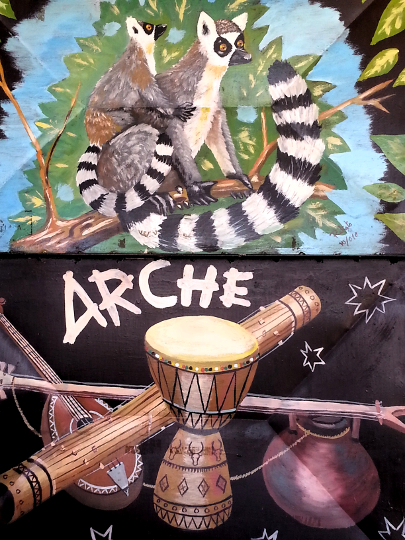
The guard at the gate points out a small posting about the tours. We have to request a tour ahead of time. Tour days are Tuesday, Wednesday, and Thursday. I write down the email address and we look for a cyber, an internet cafe. We find one near Shoprite. We buy some water at the grocery store and then buy some internet time to email our request for a THB brewery tour.
We drive by Antsirabe’s Saturday Market but choose not to venture in. It’s quite crowded and looks hectic. Maybe next time. Instead, we head to Rue Stavanger near the cathedral, browse the shops, and stop for lunch at Arche.
Arche serves typical Malagasy restaurant fare. I enjoy shrimp coco — shrimp in a coconut sauce with rice. I don’t enjoy the wine, Vin Regional Grand Cru D’Antsirabe. I hope they just had a bad bottling. I’m no wine expert, but I don’t think a white wine should be tasting like sherry with hints of vinegar.
Kololandy
We next search for Kololandy, a workshop specializing in traditional weaving of silk, cotton, sisal, and raffia. Misa asks passerbyes for directions. We eventually see a small sign and drive down a rough, unpaved, city street and turn in through a gated alley. Kololandy is a small workshop in an old industrial building. We meet Viviane Raoelina, the owner and designer. She walks us around the workshop showing us the different items they make, including silk scarves from both farmed and wild silk. Definitely worth the effort to find this place.

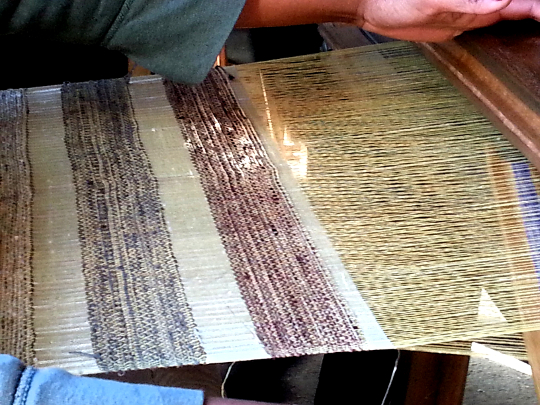
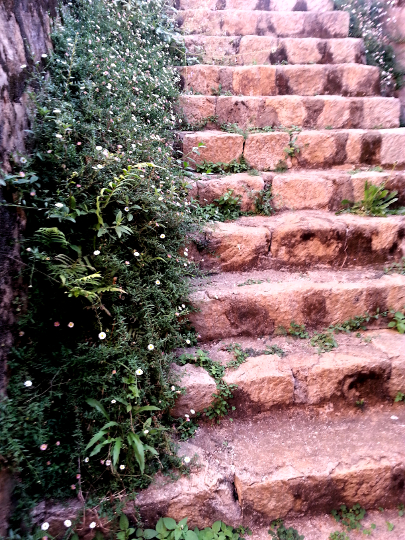
Hotel des Thermes
Late afternoon, and we drive over to the Hotel des Thermes, a grand edifice built on a hill above the thermal baths. The baths were built in 1917 and the hotel opened in 1922. The staff at the front desk say it’s fine if we want to walk around a bit. We look at old photos of the hotel on the wall. Quite the place in its day. Still a pretty impressive now. We take a break at the outdoor seating on the terrace. Nice gardens. Loud television and slow service at the restaurant. We think we’ll go somewhere else for dinner.

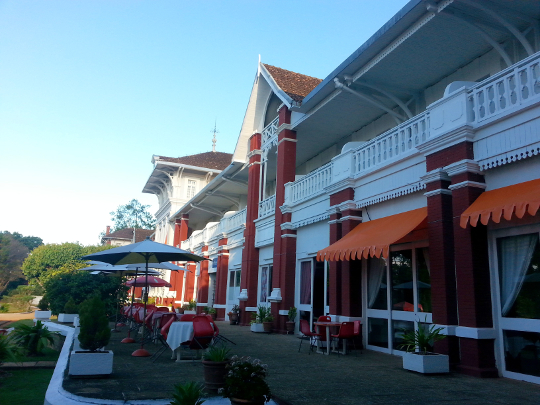
Trianon Restaurant
After reading the options in our guidebook, we choose Trianon for dinner. Mostly because it’s not too far away from where we are at the Hotel des Thermes. Good choice. They specialize in Italian cuisine, which is a nice change from the Malagasy and French we’ve been having.


